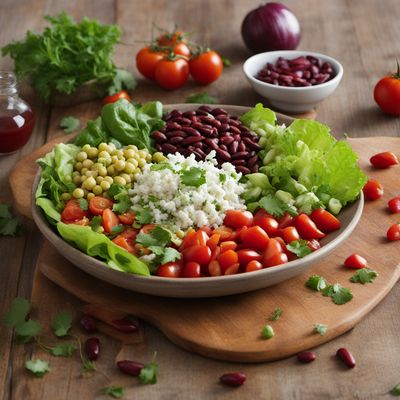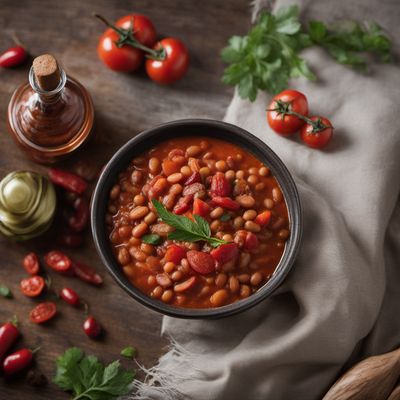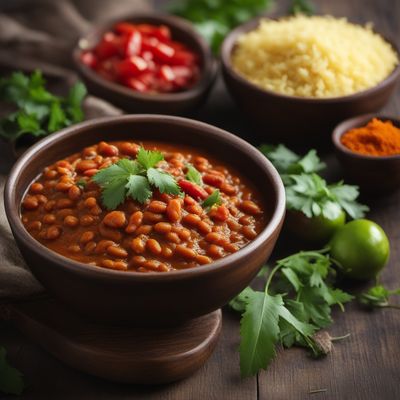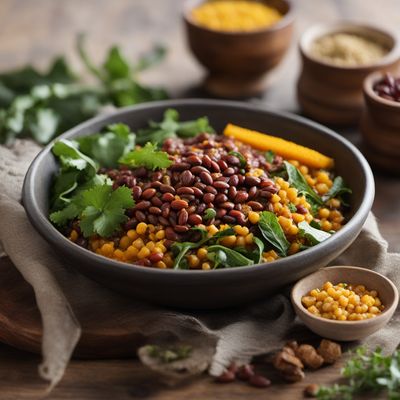
Ingredient
Kidney bean (fresh seeds)
The Mighty Red Bean
Kidney beans are small, kidney-shaped legumes with a firm texture and a rich, earthy flavor. They have a smooth skin and a creamy flesh that absorbs flavors well when cooked. These beans are commonly used in soups, stews, chili, and salads.
Origins and history
Kidney beans have been cultivated for thousands of years and are believed to have originated in Peru. They were later introduced to Europe by Spanish explorers during the 15th century. Today, kidney beans are widely grown in many countries, including the United States, India, China, and Brazil. They hold cultural significance in Latin American, Caribbean, and Indian cuisines.
Nutritional information
Kidney beans are a nutrient-dense ingredient, rich in protein, dietary fiber, folate, iron, and potassium. They are also low in fat and cholesterol, making them a healthy addition to a balanced diet.
Allergens
Kidney beans may cause allergic reactions in some individuals, particularly those with legume allergies. It is advisable to consult a healthcare professional if you suspect an allergy.
How to select
When selecting kidney beans, look for plump, unblemished seeds with a deep red color. Avoid beans that are discolored, shriveled, or have damaged skins. Additionally, choose beans that are free from mold or insect damage.
Storage recommendations
To maintain the freshness of kidney beans, store them in an airtight container in a cool, dry place. Avoid exposure to moisture, as it can cause the beans to spoil or develop mold. Properly stored kidney beans can last for up to a year.
How to produce
Kidney beans can be grown in home gardens by planting the seeds in well-drained soil and providing adequate sunlight and water. They require a warm climate and take approximately 90 to 120 days to mature. Regular weeding and pest control measures may be necessary during the growing season.
Preparation tips
Before cooking kidney beans, it is important to soak them overnight or for at least 8 hours to reduce cooking time and improve digestibility. They can be boiled, pressure-cooked, or slow-cooked to achieve a tender texture. Kidney beans are commonly used in dishes such as chili, bean soups, salads, and vegetarian burgers.
Substitutions
Cannellini beans, pinto beans, or black beans can be used as substitutes for kidney beans in recipes. However, keep in mind that the flavor and texture may vary slightly.
Culinary uses
Kidney beans are widely used in various cuisines, including Mexican, Indian, Caribbean, and American. They are commonly used in dishes such as chili con carne, rajma (Indian kidney bean curry), feijoada (Brazilian black bean stew), and red beans and rice.
Availability
Kidney beans are commonly available in grocery stores, supermarkets, and farmers markets worldwide.
More ingredients from this category
Recipes using Kidney bean (fresh seeds) » Browse all

Livonian-style Waakye
Savory Livonian Rice and Beans Delight

Creamy Black Lentil Stew
Velvety Delight: A Creamy Twist to Black Lentils

Madurese-style Sopa Tarasca
Spicy Tomato Soup with Madurese Twist

Scafata with Spring Vegetables
Spring Delight: A Vibrant Scafata Recipe Bursting with Fresh Italian Flavors

Jiangsu-style Salted Fava Beans
Savory Jiangsu Fava Beans: A Delightful Twist on a Spanish Classic

Solterito Salad
Andean Delight: Solterito Salad

La Jota Triestina with a Twist
Savory and Spicy Bean Stew with Smoked Sausage

Fazolová with a West African Twist
Guinea-Bissauan Fazolová: A Fusion of Slovak and West African Flavors

Tamil-style Baked Beans Curry
Spicy and Tangy Rajma Curry with a Tamil Twist

Koki Beans with Coconut Milk
Creamy Delight: Koki Beans in Coconut Milk

Native American Allerlei
Harvest Medley: A Native American Twist on Leipziger Allerlei

Caucasian-style Bean Soup
Hearty Bean Soup with a Caucasian Twist